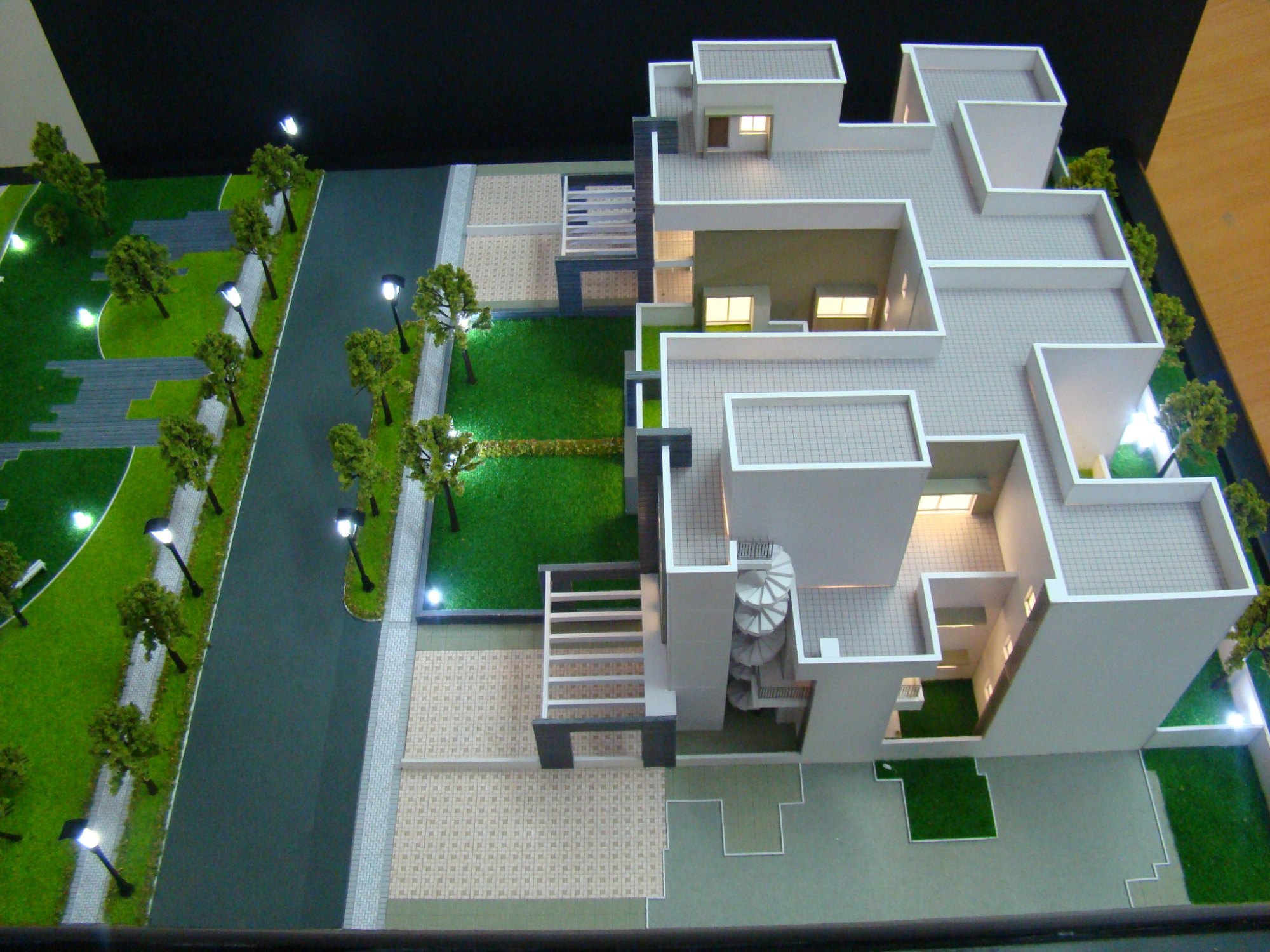Understanding the Concept of Presentation Model
Definition and Importance of Presentation Model
A presentation model is defined as a well-crafted, scale-model of a final design, primarily used in various areas such as architecture, product design, and engineering to visually convey a concept or idea. The primary purpose of such models is not just aesthetics, but also functionality—they serve to effectively communicate the intended message and ensure viewers can grasp complex information quickly and accurately.
In industries like architecture, for instance, a physical or digital presentation model allows stakeholders, clients, and the general public to visualize the space, understand the design flow, and comprehend how the project will fit into its surroundings. This becomes particularly important during presentations because it can significantly influence decision-making processes, alleviate uncertainties, and create a shared vision among stakeholders.
Key Characteristics of an Effective Presentation Model
To be effective, a presentation model should possess the following key characteristics:
- Clarity: The model must clearly represent the intended design, allowing viewers to quickly understand its purpose and function.
- Realism: Effective presentation models often incorporate realistic elements such as colors, textures, and materials that resemble the final product.
- Scale: The scale used in the model should provide an accurate representation relative to actual size, ensuring that observers can easily gauge the scale of the design.
- Interactivity: Where applicable, highly effective models allow for some level of interaction, helping audiences engage with the design in a more profound way.
- Detail: The level of detail included in a presentation model should match the project’s requirements and audience expectations; too much detail can lead to confusion, while too little can deprive the audience of essential information.
Common Uses in Various Industries
Presentation models find application in numerous industries, including:
- Architecture: Used extensively for building designs and urban planning.
- Product Design: To prototype a new product to test usability and appeal.
- Film and Game Development: For visual effects planning and audience engagement during presentations.
- Education: Serving as tools for teaching complex concepts through visual aids.
Types of Presentation Models
Physical vs Digital Presentation Models
Presentation models can broadly be categorized into two types: physical and digital. Physical models are tangible and can be created using materials such as wood, plastic, or metal. These models allow for an immediate tactile experience, beneficial in fields such as architecture where understanding physical space is crucial.
Conversely, digital presentation models usually utilize software to create and display designs in a three-dimensional (3D) format. These models allow for greater flexibility, offering the capability to easily edit designs and explore different configuration scenarios. Technologies such as virtual reality (VR) and augmented reality (AR) are increasingly becoming integrated into these digital models, providing immersive experiences that traditional physical models cannot offer.
Scale Models and Their Applications
Scale models play a significant role in presenting designs at a reduced or expanded size that holds proportional relationships to the actual objects. Their applications vary, including offering a precise representation of architectural buildings, city planning, and even small engineered products. For instance, scale models in architecture showcase the completed building’s exterior and spatial relationships based on correct ratios and dimensions. Such representation helps clients feel more confident in their investment and helps guide construction teams in planning and execution.
Interactive Presentation Models: Engaging Audiences
Interactive models, using technology, elevate audience engagement by allowing them to manipulate different elements or parameters of the model, creating a customized viewing experience. Applications range from interactive 3D models that stylistically represent products to simulation tools in urban planning where stakeholders can visualize changed variables, assessing outcomes in real-time. This form of interactivity not only enhances understanding but also supports collaborative efforts in decision-making processes.
Best Practices for Creating a Presentation Model
Steps to Designing an Effective Presentation Model
Creating a presentation model involves a series of methodical steps:
- Identify the Objective: Determine the purpose of the model. What message or design aspect do you want to communicate?
- Choose the Right Type: Decide on either a physical model or a digital representation based on the audience’s needs and project objectives.
- Gather Materials and Resources: For physical models, choose materials that best reflect the final product. For digital models, select the right software tailored for your design needs.
- Design and Create: Draft initial designs, create prototypes, and adjust according to feedback.
- Test and Refine: Share the model with targeted stakeholders for insights and improvements.
- Finalize the Presentation: Conduct a final review and prepare for the presentation by focusing on narrative and delivery.
Common Mistakes to Avoid
While creating a presentation model, avoid these common pitfalls:
- Overcomplicating Details: A model too complex can distort the primary message.
- Ignoring Audience Needs: Not tailoring the model to the audience’s expectations can lead to confusion or disengagement.
- Neglecting Feedback: Failing to iterate based on audience input can result in a less effective presentation.
Tools and Software for Model Creation
The right tools enhance the model creation process significantly. Some popular software options include:
- SketchUp: Ideal for creating 3D models and architectural designs.
- Autodesk Revit: Excellent for complex architectural modeling with a focus on building information modeling (BIM).
- Blender: A free, open-source tool perfect for crafting intricate 3D digital models.
- Adobe Creative Suite: Essential for graphic design elements, enhancing the model’s aesthetics.
Measuring the Impact of Your Presentation Model
Performance Metrics to Consider
To gauge the effectiveness of your presentation models, consider utilizing various performance metrics:
- Audience Engagement: Measure engagement rates through surveys or observations during presentations.
- Feedback Quality: Analyze qualitative feedback from stakeholders to identify strengths and weaknesses.
- Decision Outcomes: Track the extent to which decisions favored by the model correlate with desired results.
Feedback and Iteration Strategies
Continuous improvement is vital. Utilize these feedback strategies: a focus group of key stakeholders can provide insights; employ follow-up surveys that allow attendees to rate aspects of the presentation, and refine your model based on constructive criticism to enhance future iterations.
Case Studies: Success Stories with Presentation Models
Many organizations have successfully utilized presentation models. For example, an architectural firm utilized a hybrid model combining both a physical scale model and an interactive digital version during a community meeting. The physical model allowed visitors to explore tactile elements, while the digital model showcased future scenarios under various lighting conditions, leading to community support for their project.
Future Trends in Presentation Modeling
Technological Advancements Affecting Presentation Models
Emerging technologies are progressively reshaping how presentation models are crafted and utilized. Innovations such as virtual reality (VR) and augmented reality (AR) create immersive experiences for audiences, making complex designs more approachable and understandable. Additionally, artificial intelligence (AI) can now suggest modifications based on real-time data, further enhancing model accuracy and presentation quality.
Emerging Techniques and Innovations
As industries evolve, so do presentation techniques. 3D printing has revolutionized physical model crafting by allowing intricate designs to be produced quickly and accurately, reducing time and costs. On the digital front, machine learning algorithms can analyze audience interactions with models and suggest adjustments for improving engagement levels. The rise of gamification in models has also engaged audiences by creating interactive learning experiences, inviting their participation in novel ways.
How to Stay Ahead in Presentation Model Trends
Staying abreast of trends within the presentation modeling space requires continual learning and adaptation. Attend industry conferences, join relevant online forums, and take advantage of webinars from thought leaders to keep up-to-date. Exploring collaborations with tech companies can also foster opportunities for incorporating new technologies into your models, ensuring your presentations remain attractive and pertinent to your audience.



